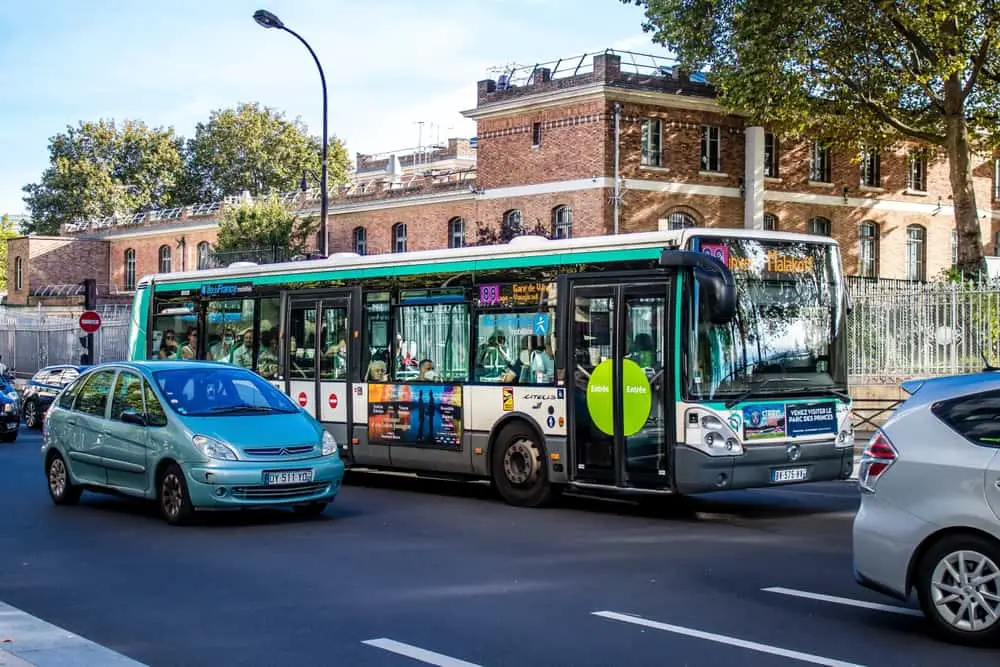
The modern world is full of many modes of transportation. Most people are familiar with land-based commercial and personal transportation in the form of cars and buses.
These are among the two most common and popular forms of transportation internationally, but how do buses compare to cars? What are the significant differences between a bus and a car? Do these vehicles share any similarities?
Buses and cars are made to transport people, and they function similarly, but buses are made to transport 30–60 people, while cars transport 4–7 people. Most buses are basically the same, while cars are made with different designs for different purposes regarding driving style and terrain.
The bus and the car are similar in many ways. Both use the same forms of engines and have the same fundamental uses, but they are also very different in many ways.
Let’s directly compare buses and cars to determine their most prevalent difference, as well their most significant similarities.
Bus vs Car: A Direct Comparison
| Measure (Average) | Bus | Car |
|---|---|---|
| Length | 39.4 feet (12m) | 14.7 feet (4.48m) |
| Width | 8.4 feet (2.54 meters) | 5.7 feet (1.77 meters) |
| Weight | 30,000 – 45,000 lbs | 1,500 – 6,000 lbs |
| Fuel Capacity | 50 gallons (227 liters) | 12 gallons (45.4 liters) |
| Fuel Consumption | 3.5 MPG | 24.6 MPG |
| Seat Capacity | 30-60 | 4-7 |
| Number of Doors | 2 | 4 |
Cars and buses are two of the most common and widely used forms of automotive transportation worldwide. These vehicles are instrumental in many ways and allow people to travel long distances easily.
Buses and cars are similar in many ways, and they are different in many ways, and comparing these two vehicles is an important exercise for several reasons.
Understanding their critical differences and similarities may help you decide which mode of transport is better for you. It will also help highlight the various uses-cases, performance, economic, and environmental factors that make these vehicles different.
Let’s compare the bus and the car to explore these various factors and highlight the differences and similarities between these vehicles.
Bus vs Car: Size
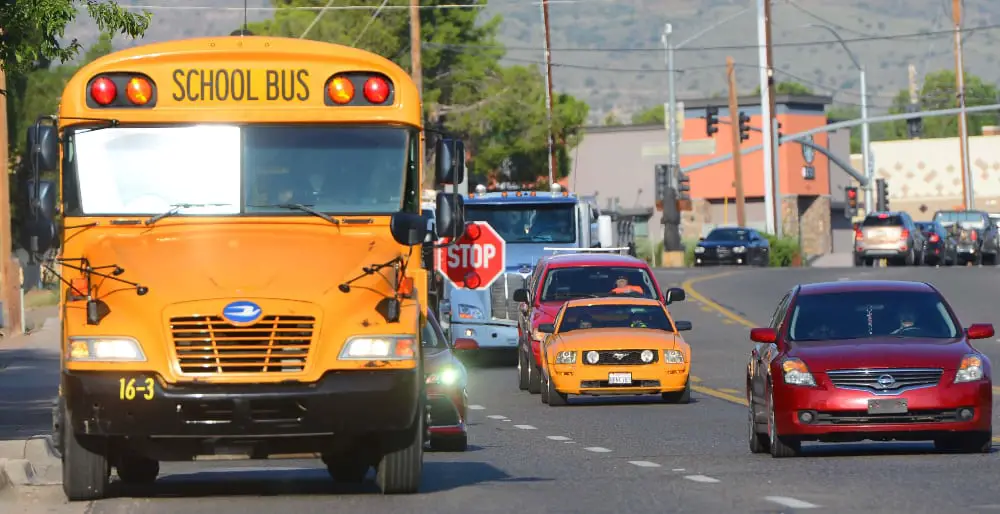
| Vehicle | Average Length | Average Width |
|---|---|---|
| Bus | 39.4 feet (12m) | 8.4 feet (2.54 meters) |
| Car | 14.7 feet (4.48m) | 5.7 feet (1.77 meters) |
The most obvious comparison between buses and cars is the overall size of these vehicles.
Buses are typically huge vehicles designed to simultaneously transport dozens of people. Cars, by comparison, are much smaller than buses, as they are designed to transport smaller numbers of people.
Most cars are designed to only transport five people or less and are therefore much smaller, as they do not require the size and space for more than this small number of people.
There is a wide variety of cars on the roads, but the average length of modern cars is 14.7 feet (4.48 meters), and the average width of modern cars is 5.7 feet (1.77 meters).
The significantly larger bus has an average length of 39 feet and 4 inches (12 meters) and an average width of 8 feet and 4 inches, excluding mirrors (2.54 meters).
This comparison makes it clear that buses are far larger than cars. Both fit on the same lane on the road though, as they are made to suit all types of vehicles.
To clarify the comparison, many buses and cars fall outside of these average size figures. There are tiny, two-door cars designed to be as compact as possible, and there are massive, double-decker coach buses designed to be as large as possible.
Bus vs Car: Weight
| Vehicle | Average Weight |
|---|---|
| Bus | 30,000 – 45,000 lbs (13,600 – 20,400 kg) |
| Car | 1,500 – 6,000 lbs (680 – 2,721 kg) |
An important comparison to consider when comparing a bus and a car is the weight of these two vehicles.
The exact weight of an individual car or bus is determined by several factors, including the type of vehicle, the engine, and whether or not it is fully loaded.
Buses typically weigh 30,000 – 45,000 pounds (13,600 – 20,400 kilograms), depending on the bus model and specifications. Empty buses weigh significantly less than fully-loaded buses. The weights defined here are without passengers and luggage.
Without passengers, cars typically weigh 1,500 – 6,000 pounds (680 – 2,721 kilograms). The size and model of the car also determine the weight of a car.
I listed the weight of each car brands vehicles in these posts:
Bus vs Car: Fuel Capacity And Consumption
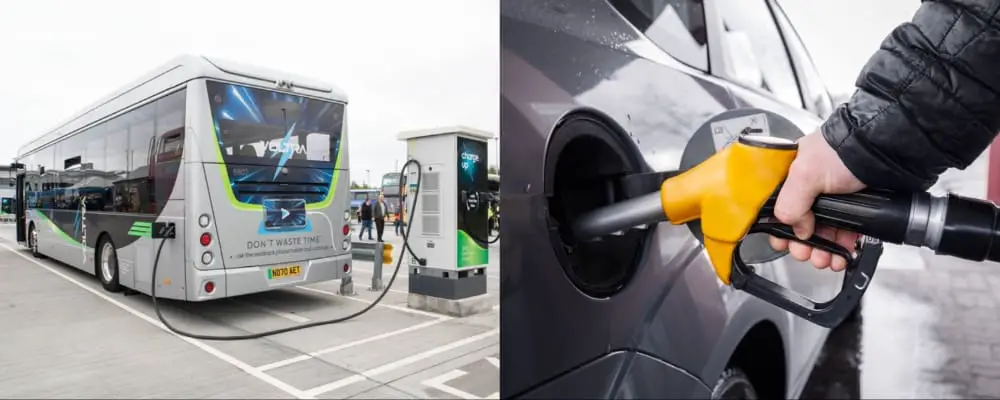
| Vehicle | Fuel Capacity | Fuel Consumption |
|---|---|---|
| Bus | 50 gallons (227 liters) | 3.5 MPG |
| Car | 12 gallons (45.4 liters) | 24.6 MPG |
Buses and cars are very different sizes, have varying weights, and use different engines. The size difference means that they also have other fuel capacity requirements and use fuel differently.
The average fuel capacity of a bus is 50 gallons (227 liters), and it will burn through 1 gallon of fuel every 3.5 miles (3.8 liters of fuel every 1.6 kilometers).
By comparison, an average car fuel capacity is 12 gallons (45.4 liters) and will do 24.6 miles per gallon of fuel (39.6 kilometers for every 3.8 liters of fuel). While that’s the average, it varies a lot between car brands.
Cars, therefore, use significantly less fuel than buses and can travel significantly further on the same amount of fuel as buses.
You can learn more about each car brand’s fuel capacity and consumption in these articles:
Bus vs Car: Engine
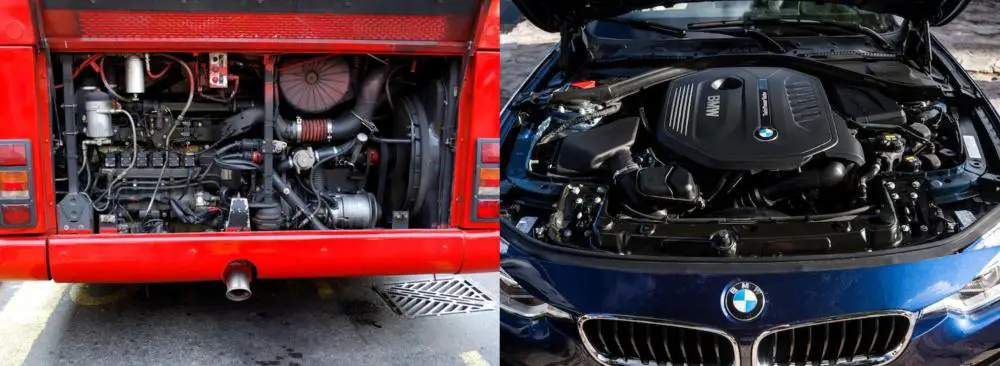
Another significant difference between cars and buses is their engines. Buses are significantly larger and heavier than cars and therefore require larger engines with more power to move them.
Cars are smaller and lighter than buses, requiring less power and smaller engines.
The average car on the road has a small engine that usually has less than 3.0L capacity and four cylinders.
These engines have varying power depending on how they are constructed and tuned. Some cars have significantly larger engines with more cylinders, displacement, and power, but most normal cars have smaller engines.
Car engines can be either diesel or gasoline-powered, and many modern cars are entirely electric or hybrid between fuel and electric-powered.
Buses, however, have massive engines, and almost all buses are powered by diesel motors. Most modern buses are equipped with V8 turbo-diesel engines with large capacities that output a lot of horsepower and torque.
Bus vs Car: Passenger Capacity
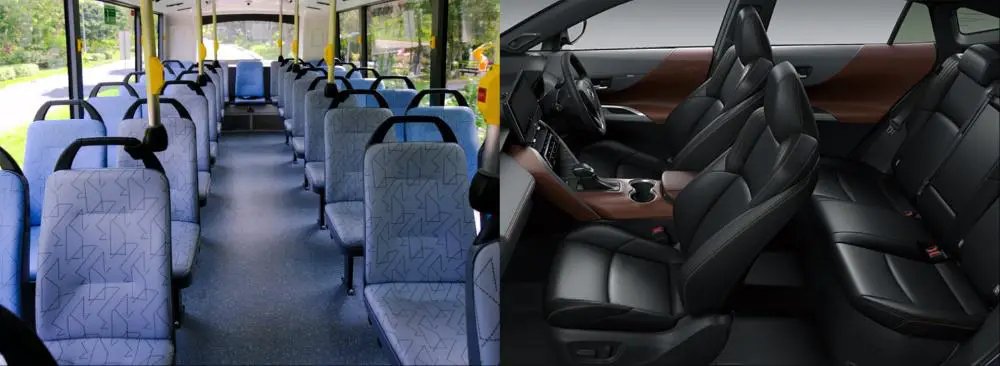
| Vehicle | Passenger Capacity |
|---|---|
| Bus | 30-60 |
| Car | 4-7 |
We now arrive at a comparison of the primary function of cars and buses: the transportation of passengers. This is a critical comparison to make between these two types of vehicles.
Most cars have a capacity of five passengers, including the driver. Some larger car models have a capacity of six or seven people, including the driver, and some only have a capacity of two people in total.
However, buses are significantly larger and can transport far more people than cars. Buses typically have a passenger capacity of 30 – 60 passengers, excluding the driver. This means that buses usually have a passenger capacity that is 6 – 16 times the passenger capacity of an average car.
Bus vs Car: Versatility
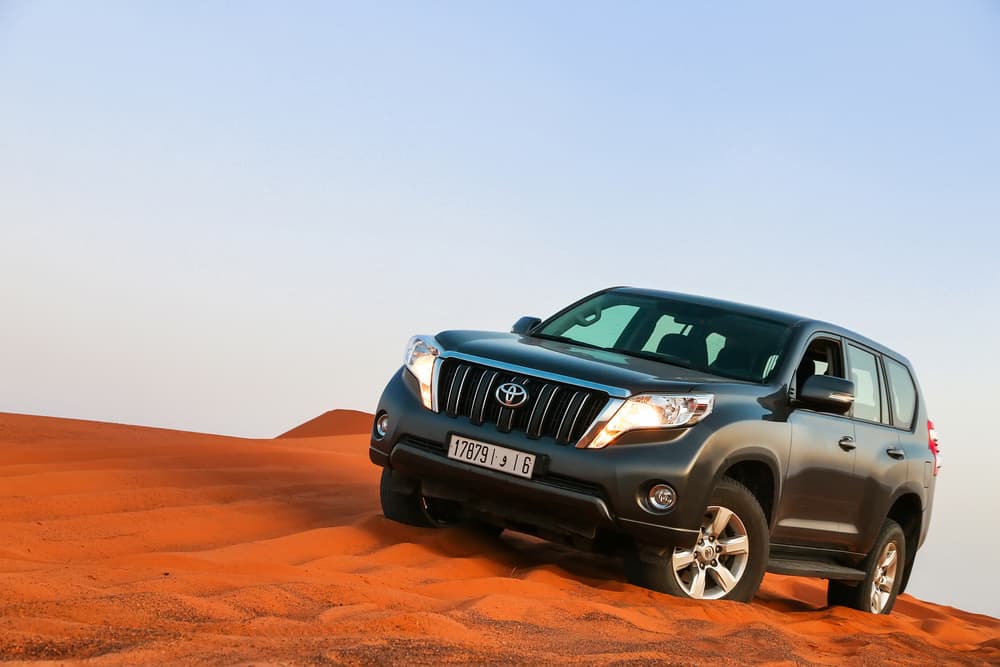
No comparison between cars and buses would be complete without comparing the versatility of these two vehicle types.
Buses are excellent transportation for large groups of people simultaneously, but they are not versatile vehicles.
These vehicles are made for smooth, inner-city or highway roads, and they cannot operate on any other terrain. Buses can store large amounts of cargo, but they are not made to be versatile at all.
Cars, however, are made to be very versatile. Some cars can handle any type of terrain; there are cars made for families, cars that are made for sport, cars that are made for transporting cargo, and even cars that are made for combinations of these uses.
Buses are better overall for transportation, but cars are significantly more versatile and can be used for multiple purposes, while buses are only made for transportation.
Bus vs Car: Number Of Doors
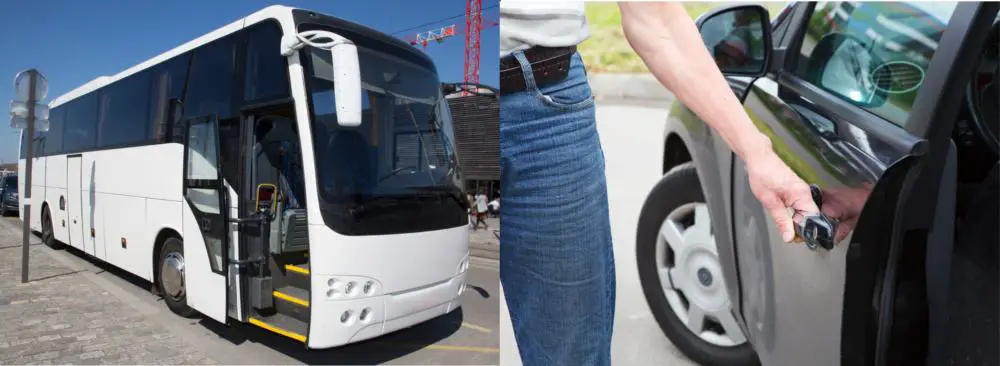
| Vehicle | Number of Doors |
|---|---|
| Bus | 2 |
| Car | 4 |
A comparison that is not often made between cars and buses is the number of doors that these vehicles are made with. This comparison may seem insignificant, but the truth is that the number of doors that these vehicles have are by intentional design.
Cars are usually made with a door for every seat or a large door for multiple rear seats and two front doors. Cars with two seats typically have two doors, cars with four seats usually have four doors, and cars with rows of seats have two front doors and two sliding doors in most instances.
This means that every passenger in a car can enter and exit the vehicle simultaneously. Buses do not have this door system.
Buses usually have two doors, and some only have one. Most modern buses have a door toward the front of the bus and a door toward the rear of the bus, and both doors are on the same side.
This means that bus passengers have to queue to enter and exit the vehicle, and they can only enter or exit from one side.
The fact that bus doors are on one side is because buses are designed to only let people off onto the sidewalk and never into the street, so buses will always stop on the side of the road that directly corresponds to the side of the bus that has doors.
Bus vs Car: Driving Operation And Difficulty
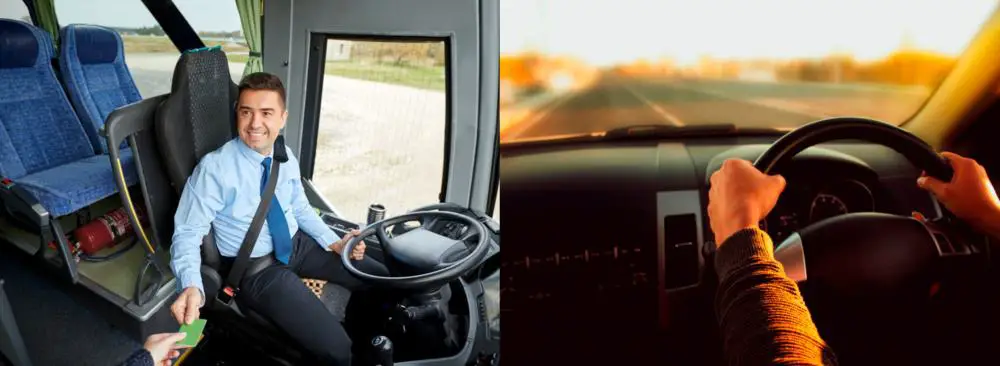
A critical comparison between the bus and the is what these vehicles are like to drive and how difficult they are to operate.
The surprising truth is that buses are pretty easy to drive. These vehicles are designed to handle their massive weight and size easily and are well-known for being simple to control.
However, it still requires significant skill to operate a bus, as modern buses have many different driver controls and driver aids that need specialized training to make good use of.
Buses require technical driving skills to understand where the corners and external edges of the bus are, as well as how to maneuver the bus efficiently.
Cars are relatively easy to drive and are not significantly more complicated to operate than buses, but they usually have more mobility, better handling, and are far easier to maneuver.
This means that driving a car requires reasonable control over the vehicle and an excellent understanding of how to handle the car. It is far easier to have an accident in a nimble and mobile car than in a large and lumbering bus.
Modern cars are also full of distractions that make it far more likely to have an accident due to a distracted driver.
Bus vs Car: Required Licensing
Cars and buses are very different to drive overall, and comparing the driving experience and skills required to operate these vehicles highlights the necessity for separate licenses for each vehicle.
A vital comparison between a bus and a car is that every country requires drivers to have separate licenses for driving a bus and driving a car. A car license does not permit a driver to operate a bus and vice versa.
Driving a bus is dissimilar to operating a car; therefore, any driver who wishes to drive both must undergo training for each.
Specialized driver training is required to handle both vehicles safely, and drivers must understand the road rules in their country regarding both vehicles.
Most countries have slightly different road rules for buses and cars, and the license training for both covers these crucial rules as well as how to drive the vehicle safely in all situations.
Bus vs Car: Variations
The final comparison that we will make between buses and cars is the variations of each vehicle. Comparing buses and cars call for the recognition that there are multiple variations of both vehicles, each with its characteristics and attributes.
Cars are available in many variations, including hatchbacks, saloons, sedans, off-roaders, SUVs, crossovers, hybrids, EVs, supercars, sportscars, hypercars, speedsters, 4x4s, and many others.
Each type of car has its specific use case and is made to fit a particular requirement and need in the car market, but they all operate and function similarly.
There are only two real variations in buses which are single-deck and double-decker buses. There are various bus types regarding functions, such as school buses and couches, but all buses are basically the same, as they are all made to fill the same automotive need.
There are no sports buses or off-road buses, and there are no buses designed for only two people.
All buses fulfill the same purpose, while cars are designed to fill specific niche purposes within the greater transportation category.
Conclusion
Comparing a bus and comparing a car is challenging as these two vehicle types are almost entirely different.
Most buses and cars have four wheels and an engine, and they are made to transport people, but that is where the similarities end. Buses and cars are vastly different.
